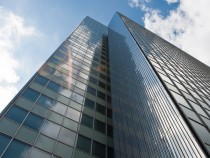
© MOMENI Gruppe
Many owners of unrenovated buildings dating from the 1950s to the 1970s face the same problems: ever fewer tenants are willing to accept the substantial limitations due to poor building conditions. Furthermore, buildings built between 1950 and 1970 often have twice as high operating costs as new buildings. Rarely is a tenant willing to cover such costs if there is a more affordable alternative to be found elsewhere. In this situation, even the demolition and subsequent new construction of a building is not a viable solution. Especially in inner cities, it is often no longer permitted to build new structures in the shape or size of large post-war office buildings. Besides, in the case of a complete refurbishment, the existing building shell represents around 20 to 25?% of a building’s value. Demolition thus seldom makes sense for financial reasons. Refurbishment of these ageing buildings is the best option in most cases. The upgrading of the facade is not the only reason to refurbish a building. However, just like the building’s mechanical installations, it does play a key role. Insufficient thermal comfort and poor indoor air quality make older buildings unattractive. Especially in high-rise buildings, deficient fire safety is another common reason for refurbishment. The same is true for the retrofitting of electrical and IT cabling, which today is important for most businesses. Buildings dating from the the 1950s and 1960s usually do not have raised access floors, where cables can easily be run. (Martin Lutz, Jürgen Einck)









